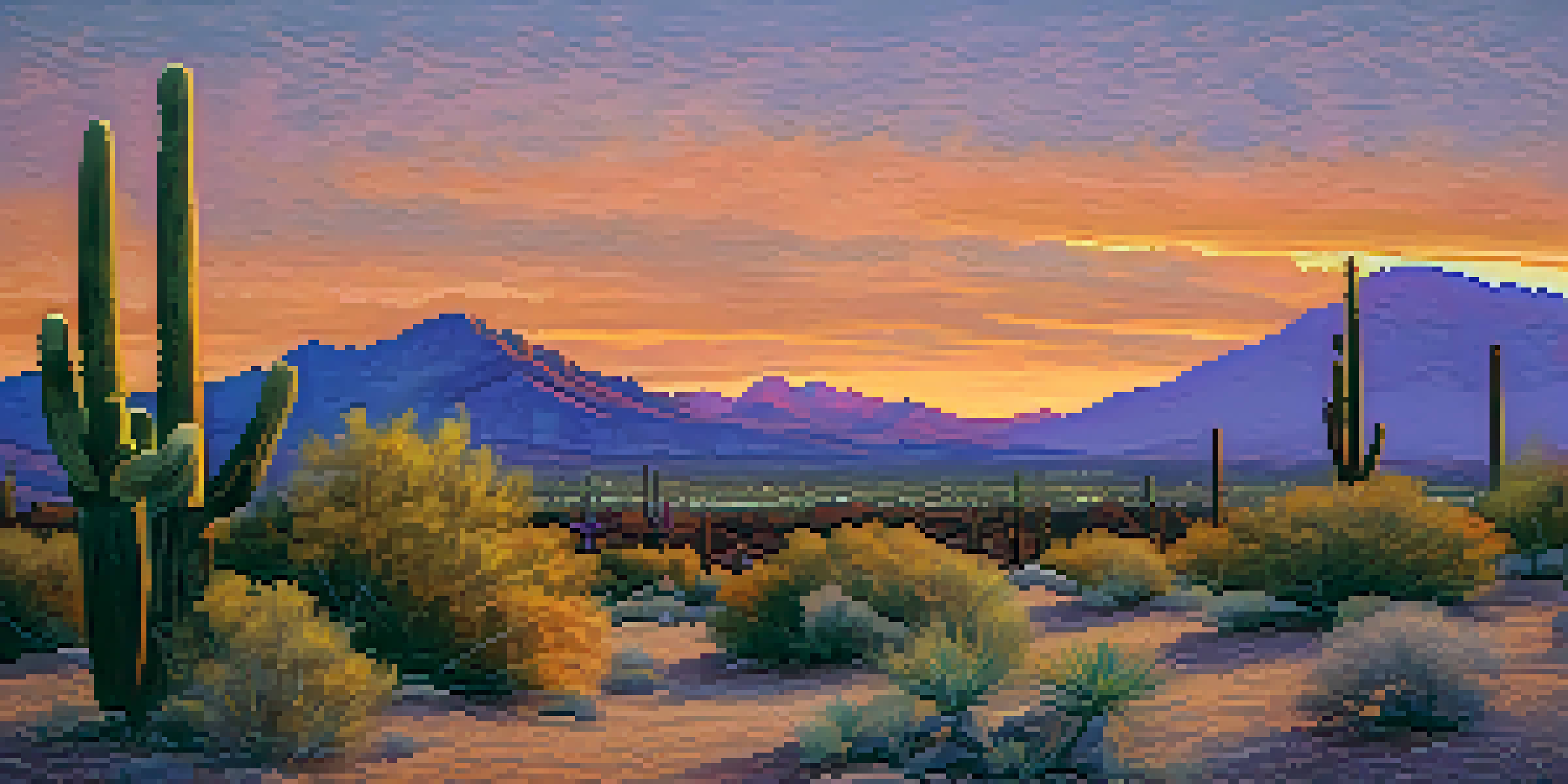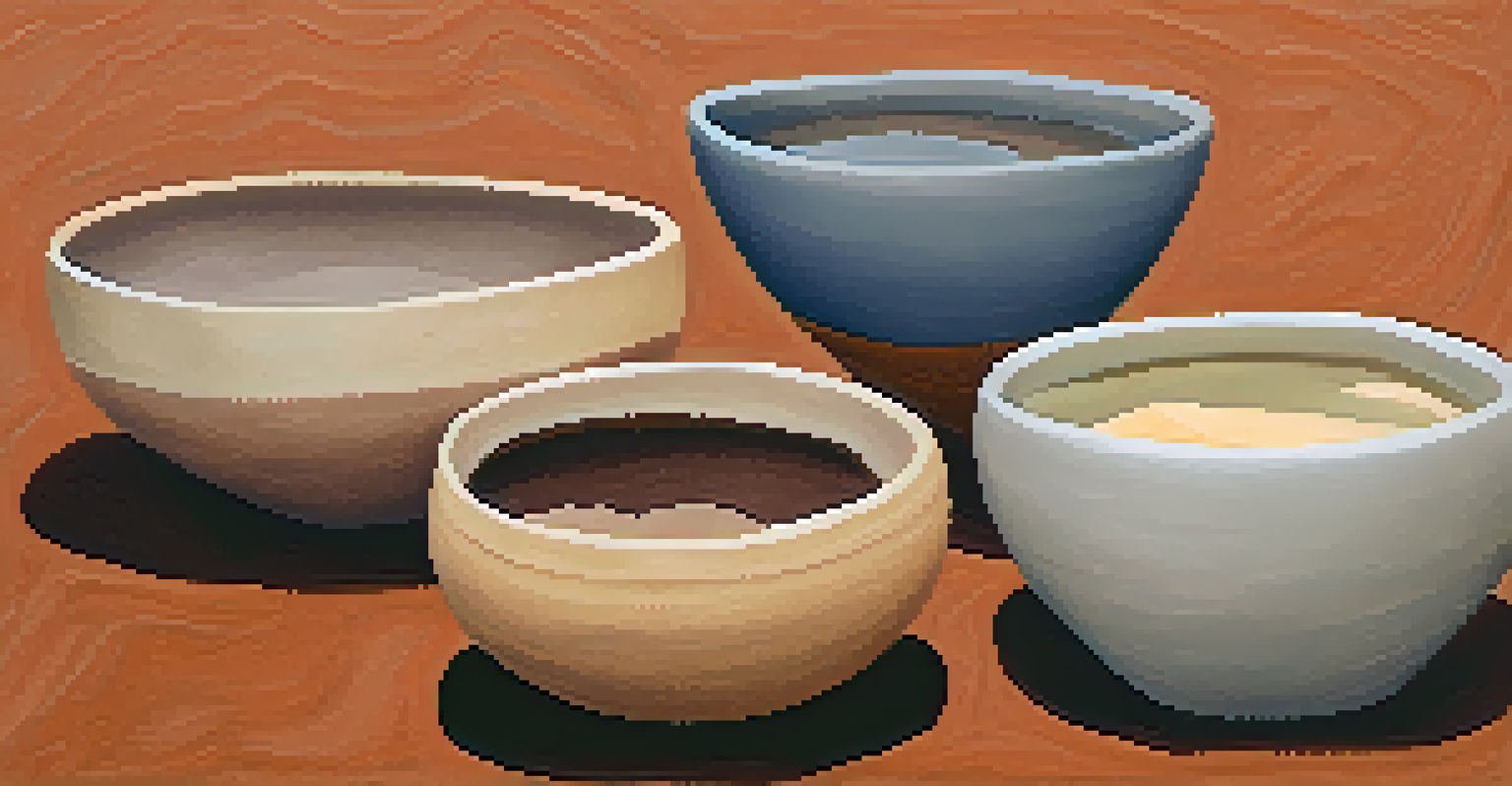Clay Sources Around Tucson: A Geologist’s Perspective

Introduction to Tucson's Clay Landscape
Tucson, nestled in the heart of the Sonoran Desert, is not just known for its stunning landscapes but also for its rich geological history. The clay deposits in this region are a fascinating aspect of its geology, offering insights into the Earth's past. Understanding these clay sources can enhance our appreciation of local natural resources and their potential uses.
Clay is the most versatile of all materials, and it is also the most sustainable.
Clay is formed through the weathering of rocks over millions of years, and Tucson's unique climatic conditions contribute to this process. The area's volcanic activity, coupled with its arid environment, plays a significant role in shaping the clay deposits we see today. As we delve deeper into the various clay sources, we uncover a treasure trove of geological wonders.
From pottery making to industrial applications, the clays around Tucson serve multiple purposes. This article will explore the different types of clay found in the region, their geological formations, and the significance they hold for both locals and enthusiasts alike.
Understanding Clay Types Found Near Tucson
The clay found around Tucson varies significantly, with each type offering unique properties and uses. For instance, kaolinite, which is white and fine-grained, is often used in ceramics and paper production. Another common type is bentonite, known for its swelling properties, making it ideal for drilling and sealing applications.

In addition to these, there are also montmorillonite and illite clays, each with distinct characteristics that appeal to different industries. Montmorillonite, for example, has excellent moisture-retaining capabilities, which makes it a favorite among gardeners and farmers. Understanding these clay types is crucial for anyone interested in their practical applications.
Diverse Clay Types in Tucson
Tucson's clay deposits include various types like kaolinite and bentonite, each serving distinct industrial and artistic purposes.
As we continue our exploration, it becomes clear that the diversity of clay types around Tucson not only enriches local crafts and industries but also adds to the region's geological tapestry. Each type tells a story of the environment, climate, and geological processes that have shaped it over time.
Key Geological Formations Contributing to Clay Sources
The clay sources around Tucson are primarily derived from specific geological formations, each contributing to the overall clay profile. The Catalina and Tucson Mountains are significant contributors, with their weathered volcanic rocks providing essential minerals. These formations have undergone extensive erosion, leading to the creation of rich clay deposits.
The earth is a mosaic of different types of clay, each telling a story of its formation and character.
Additionally, the presence of ancient riverbeds and lake beds has played a pivotal role in clay formation. Over time, sediments from these bodies of water have settled and compacted, leading to the formation of fine clay particles. This interplay between geological events and sedimentation is crucial for understanding the local clay sources.
By examining these formations, geologists can glean insights into the historical climatic conditions that have influenced clay formation in the region. This knowledge not only informs scientific research but also aids in the sustainable management of these valuable resources.
The Role of Erosion in Clay Formation
Erosion is a significant factor in the formation of clay, breaking down larger rocks into finer particles over time. In Tucson, the combination of wind and water erosion has sculpted the landscape, creating ideal conditions for clay development. As rainwater seeps into the ground, it weather the surrounding rocks, gradually transforming them into clay.
The rate of erosion can vary based on environmental factors such as vegetation cover, rainfall, and human activities. In areas with less vegetation, for example, erosion tends to be more pronounced, leading to a higher concentration of clay deposits in certain regions. Understanding these dynamics helps in predicting clay distribution across Tucson.
Erosion Shapes Clay Formation
Erosion from wind and water plays a crucial role in breaking down rocks into clay particles, influencing the distribution of clay across the region.
Moreover, erosion not only contributes to clay formation but also shapes the local ecosystems. The delicate balance between erosion and sedimentation plays a pivotal role in maintaining the environmental health of the region, highlighting the interconnectedness of these geological processes.
Practical Uses of Tucson's Clay Deposits
The clay deposits around Tucson are not just geological curiosities; they have practical applications that benefit the community. Local artisans utilize the region's clay for pottery and sculpture, creating unique pieces that reflect the area's rich cultural heritage. These handcrafted items often tell stories of the land, making them cherished by both locals and visitors.
In addition to artistic uses, Tucson's clay is also valuable in construction. Clay bricks, tiles, and other materials are made from local deposits, promoting sustainability and reducing transportation costs. This local sourcing supports the economy while also minimizing the carbon footprint associated with building materials.
Furthermore, the agricultural sector has recognized the benefits of clay in improving soil quality. Clay enhances water retention and nutrient availability, making it an essential component for successful farming practices in the arid climate of Tucson. This multifaceted usage underscores the importance of understanding and preserving local clay sources.
Environmental Considerations in Clay Harvesting
While the clay resources around Tucson offer numerous benefits, responsible harvesting practices are essential to protect the environment. Over-extraction can lead to habitat destruction and soil erosion, significantly impacting local ecosystems. Therefore, it is crucial for any clay mining operations to adhere to sustainable practices.
Regulations and guidelines are in place to ensure that clay harvesting does not compromise the surrounding environment. These measures include limiting extraction quantities and implementing restoration projects to rehabilitate mined areas. By following these protocols, we can balance the economic benefits of clay usage with environmental stewardship.
Sustainable Clay Harvesting Practices
Responsible harvesting of Tucson's clay resources is essential to protect local ecosystems and promote environmental sustainability.
Community engagement plays a vital role in promoting responsible clay harvesting. By raising awareness about the importance of sustainability, residents can contribute to the preservation of these valuable resources for future generations. This collaborative approach fosters a sense of shared responsibility towards the local environment.
Future Research Directions in Tucson's Clay Geology
The study of clay geology around Tucson is an evolving field, with plenty of opportunities for future research. Scientists are increasingly focused on understanding the impacts of climate change on clay formation and distribution. As weather patterns shift, so too may the processes that create these valuable deposits.
Furthermore, advancements in technology allow for more detailed analysis of clay properties and their applications. Techniques such as remote sensing and geospatial analysis can provide insights into previously unexplored areas. This research could lead to new discoveries about the clay resources in Tucson and their potential uses.

Collaboration between geologists, environmental scientists, and local communities will be key to advancing our understanding of Tucson's clay geology. By sharing knowledge and resources, we can ensure that these valuable deposits are studied and utilized in ways that are beneficial to both people and the environment.